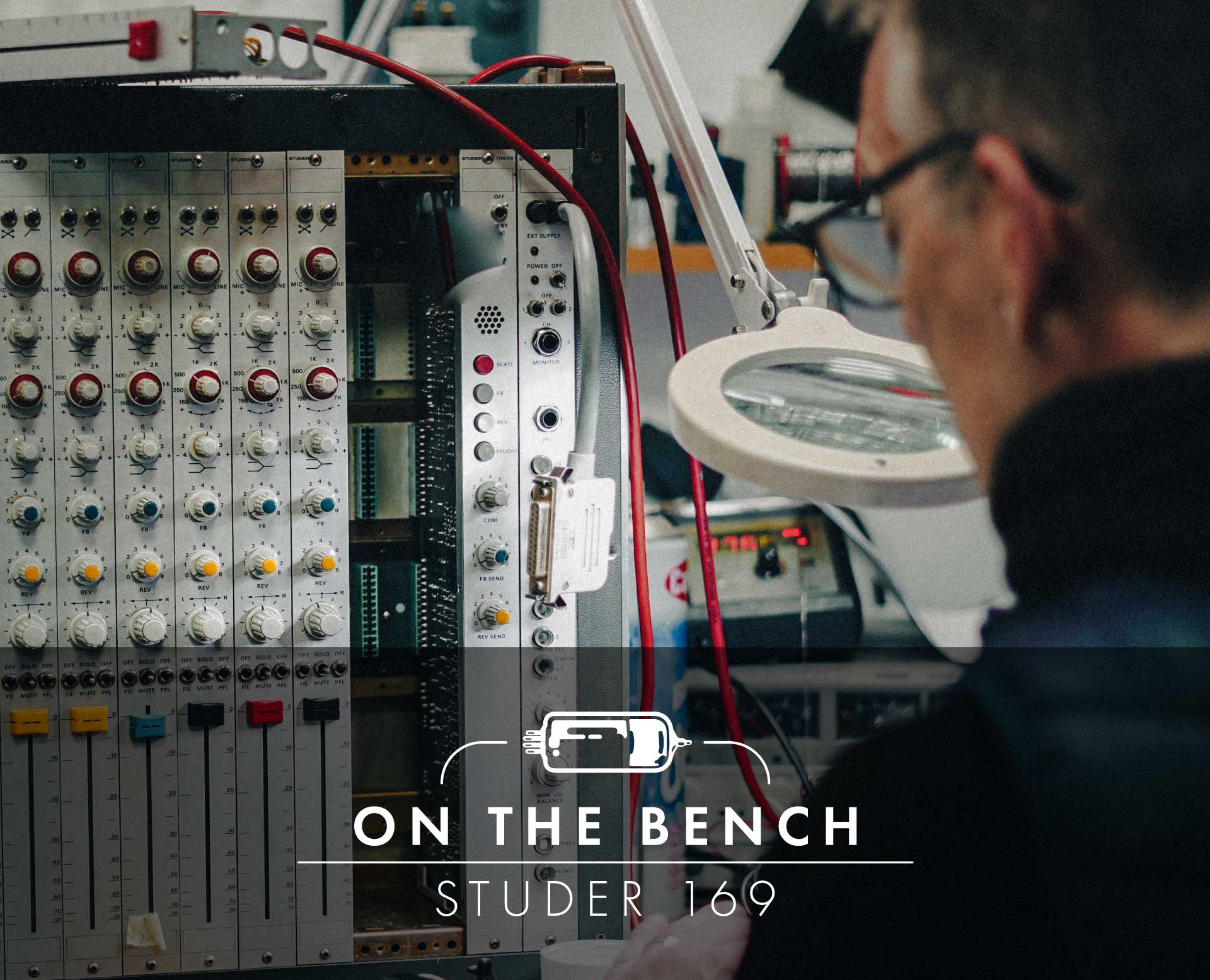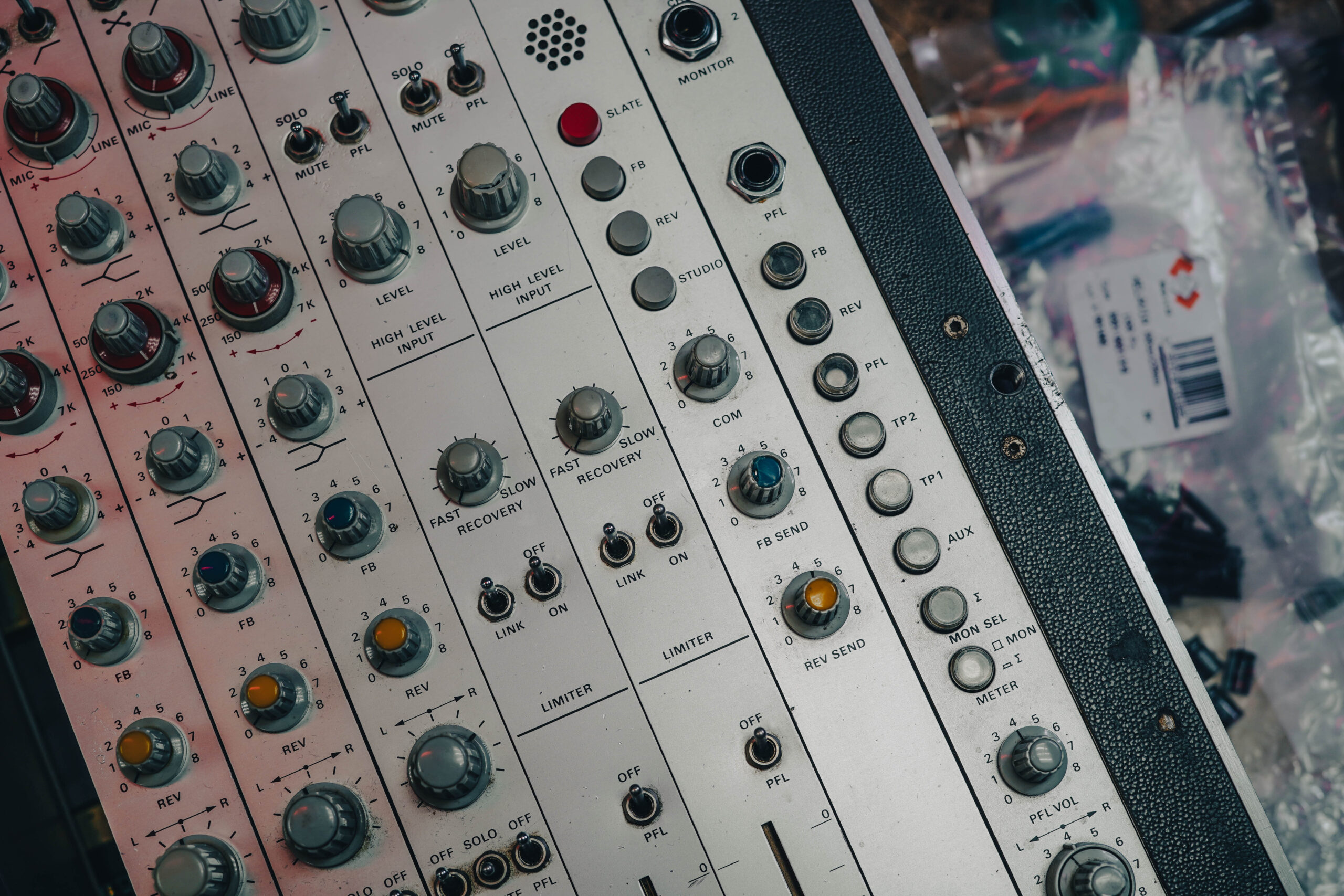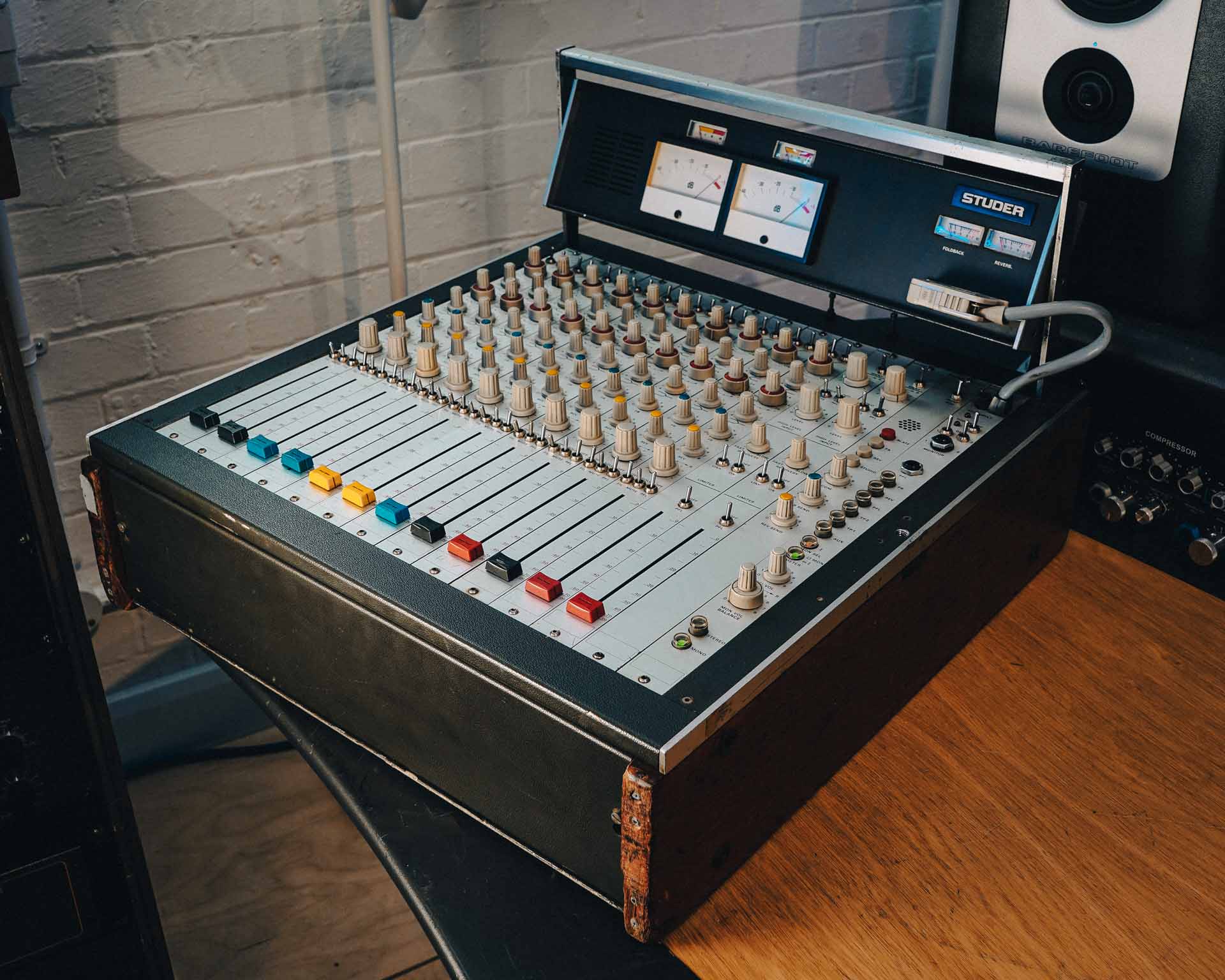
We’ve seen our fair share of small-format consoles pass through the workshop over the years, from popular offerings such as those from Neve, Calrec, Cadac, Glensound, Chilton and EMT to lesser know beauties from the likes of Acousta, Audio Developments and Seem, to name just a few.
One of the more regular desks we tend to get in is the Studer 169. Originally introduced in 1978 as a general-purpose broadcast mixer for European radio and television broadcasters, it didn’t take long for this impressive little workhorse to find its way into the studios and setups of engineers and musicians alike, thanks to its transparent, musical sound and typically robust and somewhat utilitarian Swiss build-quality. From the 1970s onwards, small-format broadcast desk really took off with the move to location-based recording becoming more prevalent and the subsequent increase in demand for “portable” alternatives to the large and bulky broadcast desks of old. Thanks to the introduction of new op-amp technologies, more sophisticated manufacturing processes and smaller, more reliable PCB boards and components, a whole new era of high-quality, customisable small-format location consoles was born.
The 169 was available in a number of configurations, from 8 to 11 inputs and featured clean, low-noise/hi gain transformer balanced microphone preamps, very smooth and transparent 3-band EQ (hi/low shelf with mid sweep), master compressor/limiters (more utility than character but useful nonetheless) and VU metering via a bridge that doubled as a handle when conveniently attached inside the chassis. If that wasn’t enough of a feature-set, It was also rack-mountable and could operate from AC, internal battery and even car battery power for truly “off-grid” recording setups!


Internally, Studer designed the circuitry to allow fairly simple and non-destructive modifications to be made; such as re-routing for direct-outs. The layout of each channel’s PCB is fairly logical and easily accessible, with a series of contact points allowing users to “tap in” at various stages in the signal chain, either pre or post EQ, for instance. Indeed, besides its impressive sound, the fact the 169 is still so popular among modern-day engineers and producers can be in part accredited to its forward-thinking and easily modifiable design, making it a great option for modern hybrid workflows.
Whilst the build-quality and general reliability of these desks is much of what makes them so appealing, as with any piece of equipment pushing 50 years old things there comes a time where a little TLC is required. Thankfully, our tech Adam has lots of experience servicing them, and with schematics on-hand and replacement parts still relatively easy to source, they’re usually fairly straightforward to operate on. This particular example came to us with a couple of failing channels. The issue was quickly traced to two faulty Studer line input transformers. Thankfully, a simple swap with the equivalent Neutrik NT1 1:1 transformers (pictured – identical both spec-wise and sonically to the originals) rectified the issue. These seem to fail more often than the mic input transformers, but as to why we’re not entirely sure. The mastering section was then recapped, along with the PSU for improved stability, and post-EQ/fader direct outs were wired to the redundant banana-plug “signalling” outputs. These would have originally been used for connecting such things as lighting cues for location/broadcast recording etc and are nowadays generally considered redundant. Beyond that we carry out the usual checks, ensuring all switches and pots are cleaned before a thorough soak test confirms all is well again.






A beautiful little desk that despite the evident quality of sound and engineering on display can still be picked-up for a not-unreasonable price on the used market.
Have you got a 169 that needs some TLC? We specialise in servicing high-quality compact broadcast desks. Simply get in touch by filling out a repair form below.
